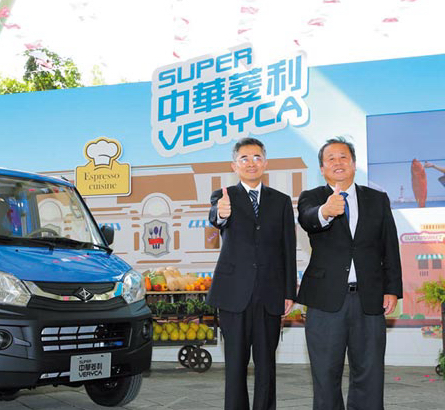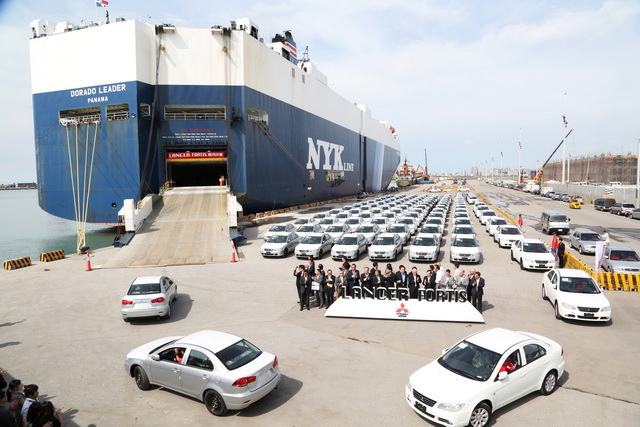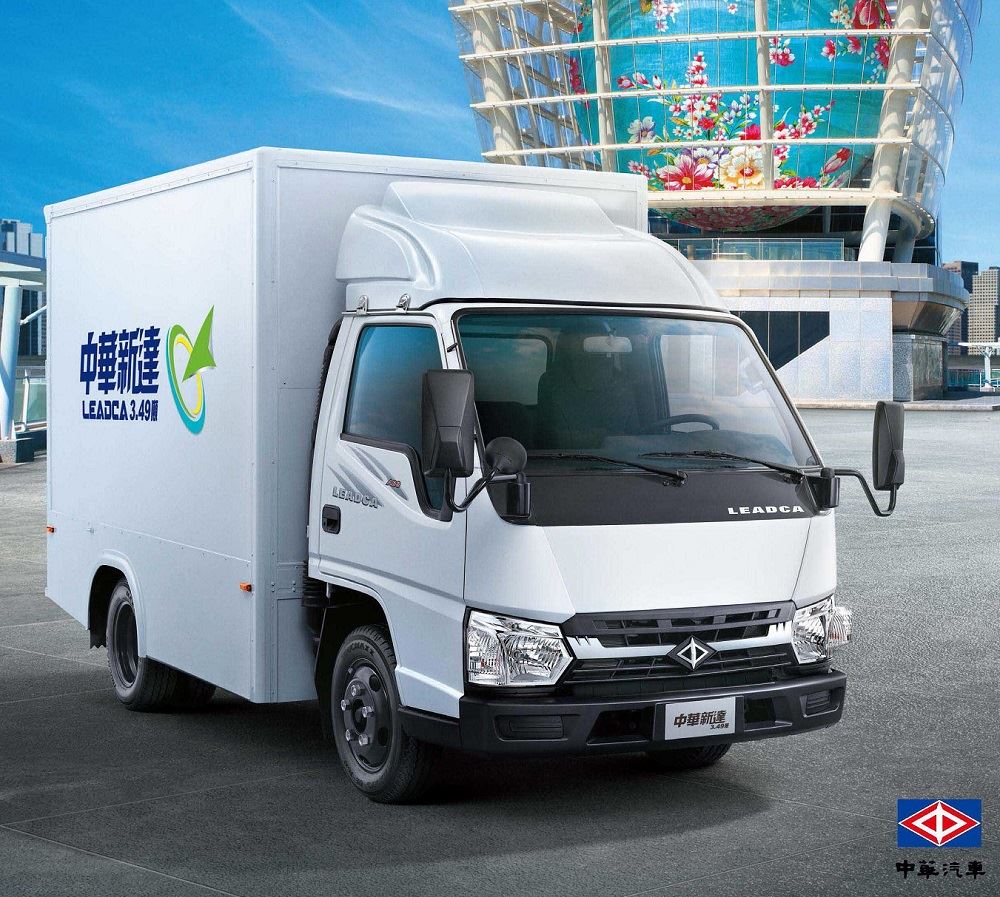CMC Maps Out Road to Growth
2013/12/23 | By Quincy LiangTaiwan's No. 2 automaker China Motor Corp. (CMC) celebrated its 40th anniversary in 2013 with the announcement of three major business strategies for future development.
CMC, an affiliate of Taiwan's Yulon Group, is the local assembler of Mitsubishi cars. The company has also been developing and manufacturing "CMC" own-brand commercial vehicles for sale in Taiwan and overseas markets. Liu Hsin-tai, president of CMC, recently announced that his company would focus future development in three directions: strengthening R&D, expanding exports and accelerating green-energy products.
Ambitious Roadmap
Liu says that CMC will roll out new vehicle models every year with an aim to consolidate its No. 2 position in domestic automobile market and boost annual sales to 100,000 units over the next five years.
Liu notes that CMC was founded 40 years ago as an assembler of Mitsubishi commercial vehicles and introduced its first light commercial-vehicle (breadbox) model, the Minicab 800, in 1978. Since 1990, CMC has been Taiwan's top producer and seller of commercial vehicles. In 1993, the company unveiled its first locally assembled passenger car: the Mitsubishi Lancer sedan. Annual sales increased to about 100,000 units in the following two to three years, making CMC the top automaker in Taiwan for five consecutive years from 1997 to 2001.

CMC began dedicating resources to development and production of electric two-wheeler vehicles in 2008. The firm debuted its first e-moving electric scooter model in 2010 and quickly won an 80% share of the domestic e-scooter market. Over the past two years, CMC's e-scooters have retained a commanding market share of about 60%. The company is also a supplier of high-level electric propulsion system modules to international customers, as well as a producer of e-bikes in partnership with local bicycle makers.
"Over the past 40 years, CMC has introduced products that embody a deep understanding of customer demands and have therefore received a very good market response every time," Liu says. "Every transformation has been a successful innovation for CMC."
Optimism about 2014
Sales of new cars in Taiwan plunged in the first half of 2013 due mainly to consumers' wait-and-see attitude prompted by speculation that the sharp appreciation of the Japanese yen might lead to lower car prices (most locally assembled car models are Japanese brands), as well as the prospect of possible government subsidies for old-car replacement. Demand has been picking up since the fourth quarter as new models hit the showrooms, including the Toyota Altis, Nissan Sentra and Mitsubishi Colt Plus. The up-tick in 2013 sales is anticipated to help the industry post a positive full-year gain over 2012, Liu says.
CMC's sales in 2013 slipped from the year before due to a lack of new models: a deficit that the company remedied with the roll out of the new Colt Plus. Liu says that his company will continue to introduce new models in 2014 to boost sales.
Next Stage
Liu notes that sales of locally assembled cars have been facing several challenges in recent years, including a stagnant domestic economy, which has hampered overall market growth, and more affordable imported cars. CMC plans to respond to these trends with a three-pronged strategy: develop more models with innovative qualities to meet local consumer tastes; expand CMC's vehicle exports, including exports of locally-assembled Mitsubishi cars, CMC-brand vehicles, and electric two-wheelers; and dedicate more resources to electric vehicles, including both four- and two-wheel products, as well as into key-parts development and production.
In addition to maintaining its No. 2 position in the domestic market, Liu says, CMC aims to achieve annual production goal of 100,000 units over next five years, and become Taiwan's leading supplier of key parts for electric vehicles.
Increasing Exports
In 2012, CMC began exporting locally assembled Mitsubishi Lancer Fortis sedans to the Middle East through the sales channels of its Japanese technical partner. Though the Japanese yen has appreciated strongly, CMC's exports of the model still increased by 50% in 2013. The company also expects to export other Mitsubishi models and expand its overseas market scope, Liu says.
From late 2012 to the end of 2013, the Japanese yen appreciated by about 25%, dampening the advantages of Taiwan-assembled cars, Liu says. However, CMC sent engineers to the Middle East market to learn more about the consumer demand there and is making adjustments based on their findings. To boost exports of locally assembled Mitsubishi cars, CMC has been in intensive talks with the Japanese automaker over a version-change project in 2014. Liu says that CMC exports the Lancer Fortis sedans to six Middle East nations and it expects to explore new markets in 2014.

Though Mitsubishi has slowed passenger-car development in recent years, Liu says, CMC will not stop developing new products alone and with its Japanese partner. Over the past four decades, CMC has built up considerable experiences and know-how that now underpins its formidable capabilities in vehicle R&D, Liu says. CMC is tapping this expertise to improve Mitsubishi's existing car models and plans to introduce at least one new vehicle model in each of the next five years.

Chinese Affiliate SEM
CMC set up its Chinese automobile joint venture South East (Fujian) Motor Co., Ltd. (SEM) in 1995 in Fuzhou, Fujian Province of China, with Fujian Motor Industry Group. Several years later, the company sold a 25% stake to Mitsubishi.
In 2013, Dongfeng Motor Corp., China's second-largest automaker in terms of output, acquired a 45% stake in smaller rival Fujian Motor, further consolidating the Chinese auto market. The share transfer and a strategic cooperation agreement between Dongfeng and the Fujian government has given the automaker a place in Fujian Motor's 50%-owned SEM.
Liu points out that Dongfeng is the largest shareholder in SEM. The new investor is expected to open doors for SEM. Dongfeng is one of the four automobile conglomerates in China receiving policy support from the central government and an automaker with influence on government policies.
In 2012, Liu adds, the Dongfeng group produced and sold more than three million new cars and commanded a major share of both passenger-car and commercial-vehicle segments. The group's resources in product planning, R&D, purchasing and marketing, as well as its horizontal business reach, are expected to give SEM strong growth momentum.




